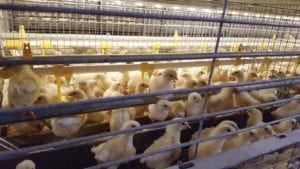Why Humidity is “Relative” to flock management
 Temperature and air quality go hand in hand with humidity, and all three directly result in a healthy flock, egg production and egg quality. However, humidity gets the least attention in the industry.
Temperature and air quality go hand in hand with humidity, and all three directly result in a healthy flock, egg production and egg quality. However, humidity gets the least attention in the industry.
Most, if not all growers, farmers, managers, and helpers directly related or responsible for a flock’s well being, know that extreme high or low temperatures have the greatest effect on health and production.
Here are a few facts about high and low humidity you should know:
Recommended humidity levels for poultry are 40% to 50% for best production and quality at the recommended ambient temperatures for poultry flocks. Recommended ambient temperatures will vary depending on breed and age of bird, so always follow breed and integrator guidelines.
Note: As a general rule, the moisture holding ability of air doubles for every 20-degree Fahrenheit rise in air temperature.
High Levels of Humidity
- Older hens exposed to 60% – 70% RH or higher results in lower egg production.
- Younger and older hens exposed to 60% – 70% RH and above will decrease in body weight.
- Egg weight, shell weight, and shell thickness are compromised by high levels of humidity, but the studies show that high ambient temperatures have the greatest negative affect.
- The percentage of checked eggs proved to be higher in elevated RH conditions accompanied with high temps.
- Wet or damp feathers result in loss of insulation.
- Wet manure.
- Ammonia levels increase drastically.
Low Levels of Humidity
- Dehydration.
- Increases water usage/consumption.
- Increases the chance of chilling the flock through possible over ventilating.
- Respiratory illness spread faster and farther.
- Humidity (below 25%) may render vaccinations against Coccidiosis ineffective. Much like the flu shot in humans, proper humidity will allow the bird to develop better immunity.
- Virus-laden dust and dander (such as Marek’s Disease) most common in low humidity barns.
Subscribe to our blog!
